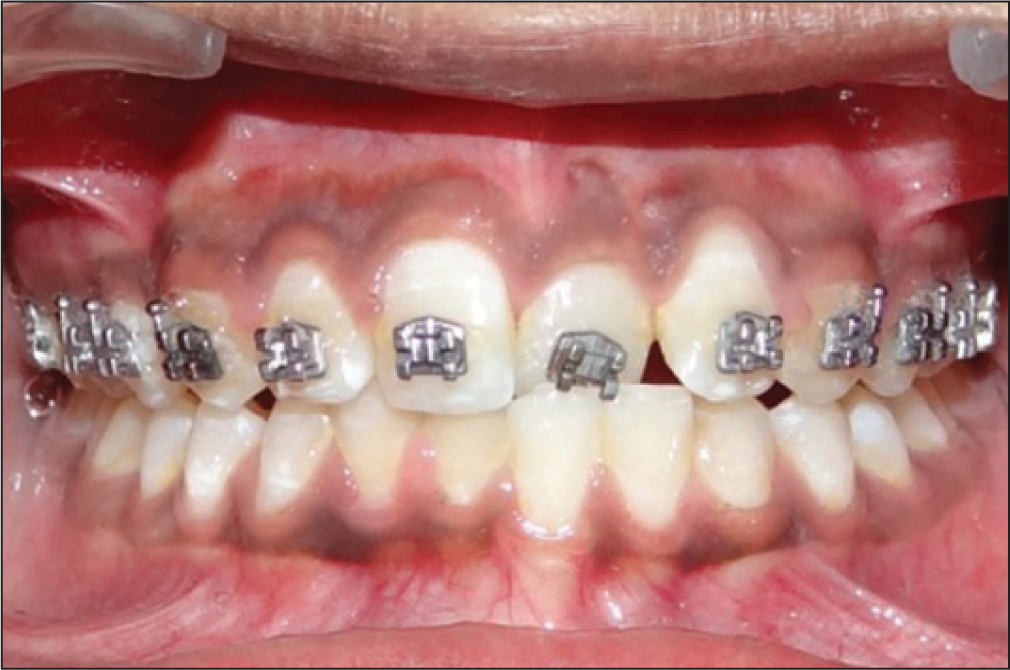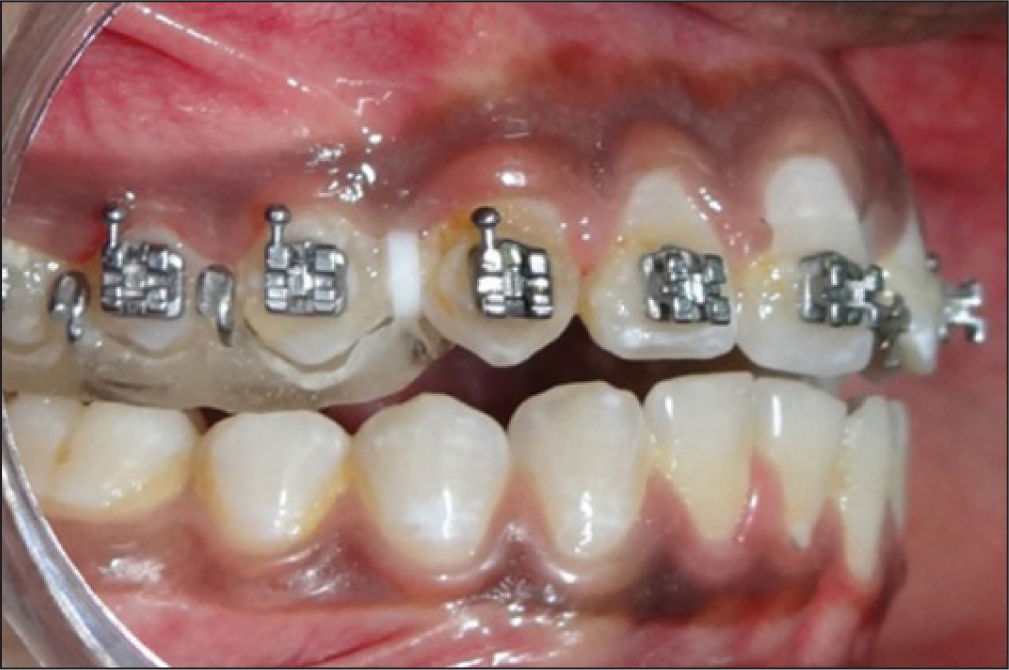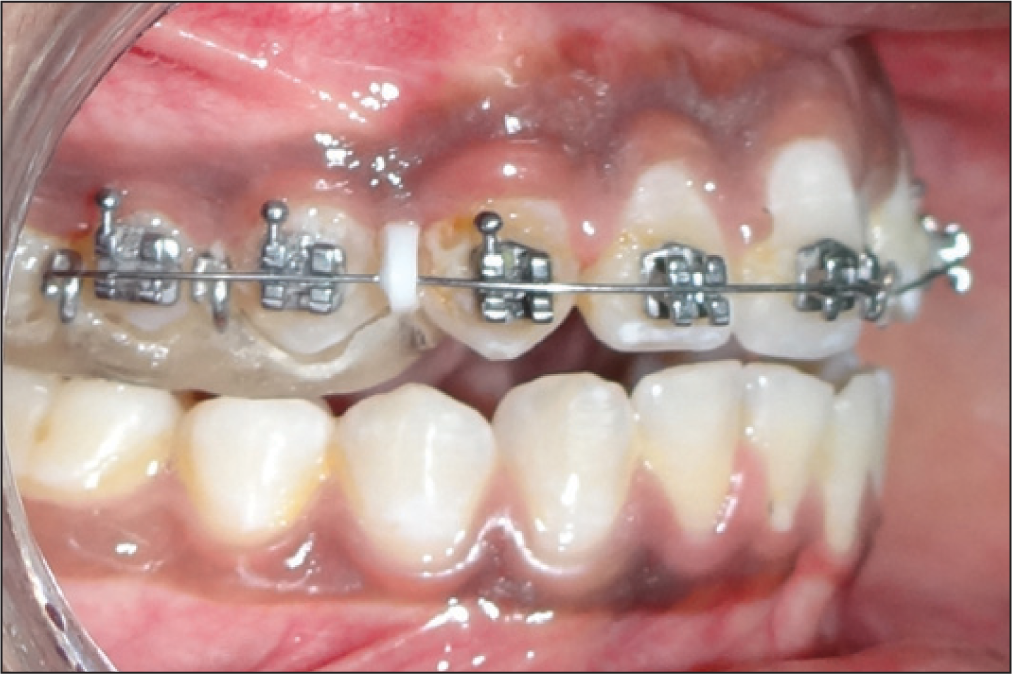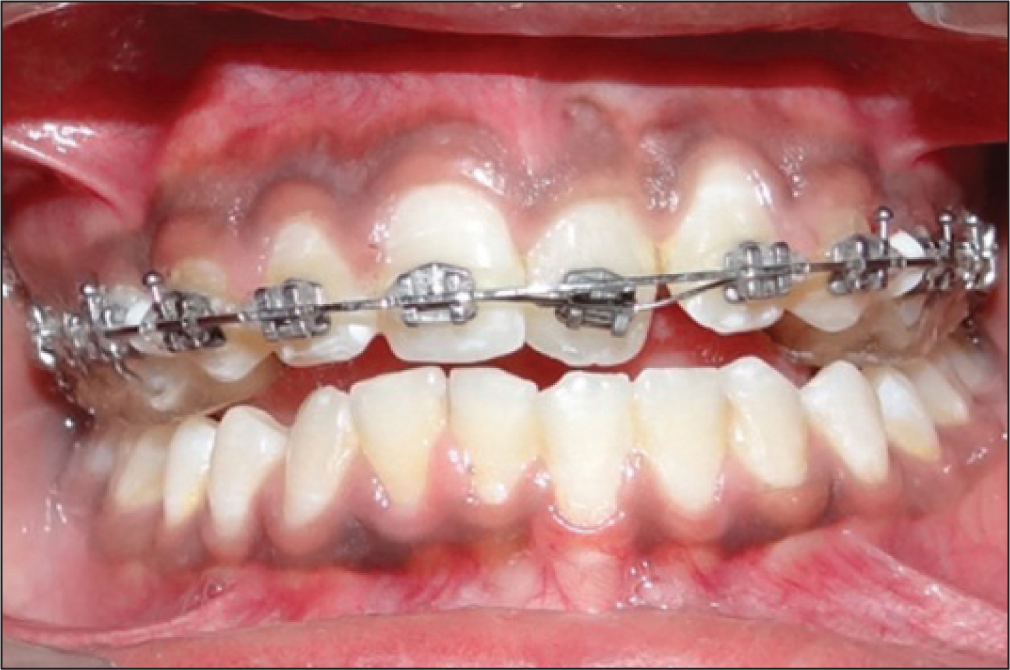Translate this page into:
Placing piggy back: An easy way out
Address for correspondence: Dr. Abhay Kumar Jain, Department of Orthodontics & Dentofacial Orthopedics, Sardar Patel Postgraduate Institute of Dental & Medical Sciences, Lucknow, Uttar Pradesh, India. E-mail: docabhayjain@gmail.com
This article was originally published by Wolters Kluwer and was migrated to Scientific Scholar after the change of Publisher.
Abstract
Use of piggy back nickel-titanium (NiTi) archwire with stainless steel base archwire is often a part of an orthodontic treatment mechanics. Here is an innovative method for securing the piggy back.
Keywords
Piggy back
archwire
orthodontics
INTRODUCTION
Correction of certain malocclusions such as a single tooth cross bite and palatally or lingually placed tooth [Figure 1] often requires the use of piggy back NiTi archwire attached with a stainless steel base archwire. The placement of the piggy back NiTi is a cumbersome procedure. The following procedure provides a simplified method for securing the piggy back NiTi wire with stainless steel base archwire.

- Malocclusion showing anterior single tooth crossbite
PROCEDURE
Place elastomeric orthodontic separators between the canine and premolar/first and second premolars, with a portion of each separator extending above the occlusal surfaces [Figure 2].
 Figure 2
Figure 2- Elastomeric orthodontic separators between the canine and premolar
Pass the ends of the NiTi wire through the separators so that the anterior segment of the wire is in passive contact with the bracket slot of the anterior teeth [Figure 3].
 Figure 3
Figure 3- Placing nickel-titanium wire through the separators maintaining passive contact with the bracket slot of the anterior teeth
Ligate the instanding tooth (Central incisor) with ligature wire [Figure 4].
 Figure 4
Figure 4- Instanding tooth (central incisor) ligated with ligature wire
Place stainless steel base archwire above NiTi wire for stability [Figure 5].
 Figure 5
Figure 5- Stainless steel base archwire placed above nickel-titanium wire for stability
After ligating stainless steel base archwire cut and take out the separators [Figure 6].
 Figure 6
Figure 6- Separators removed
CONCLUSION
In this procedure handling of the piggy back wire becomes easier as it is engaged into the separators, which can be cut and removed after the engagement of the stainless steel base archwire.
Source of Support:
Nil.
Conflict of Interest:
None declared.






